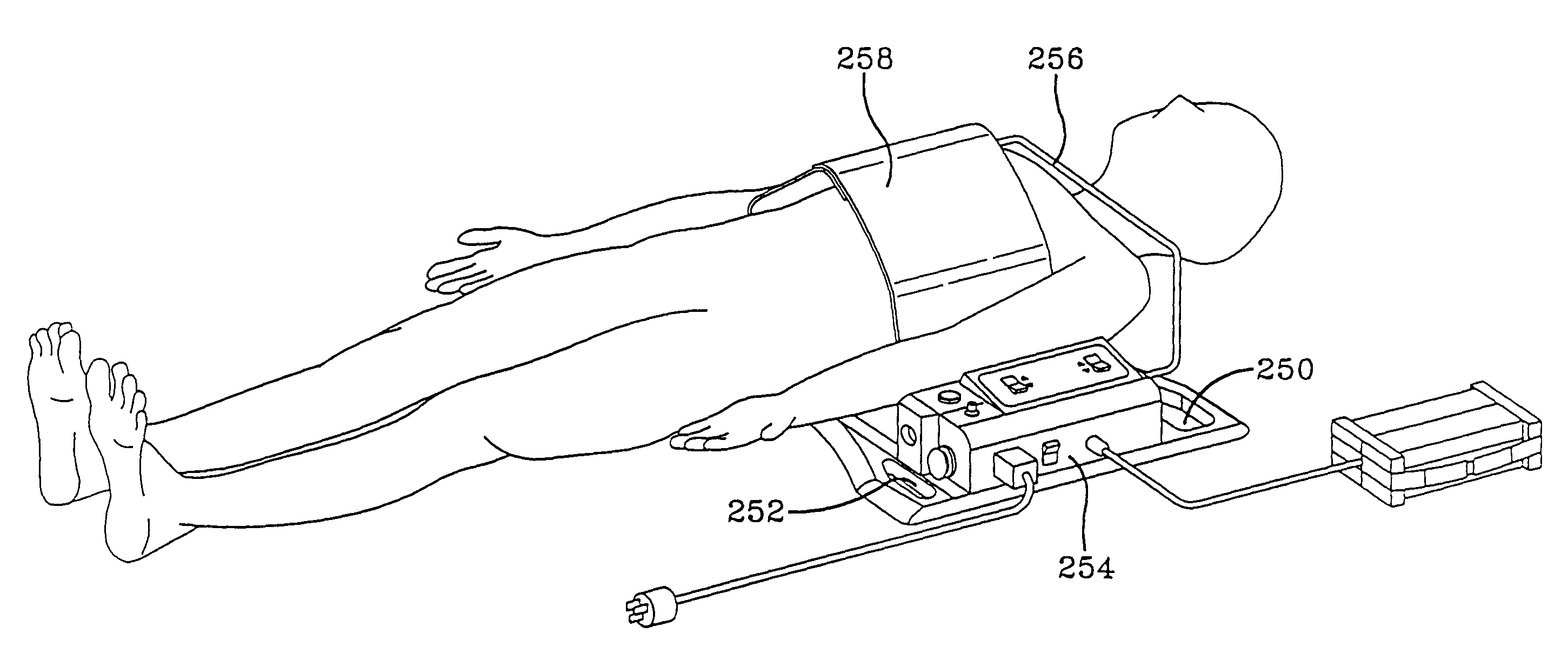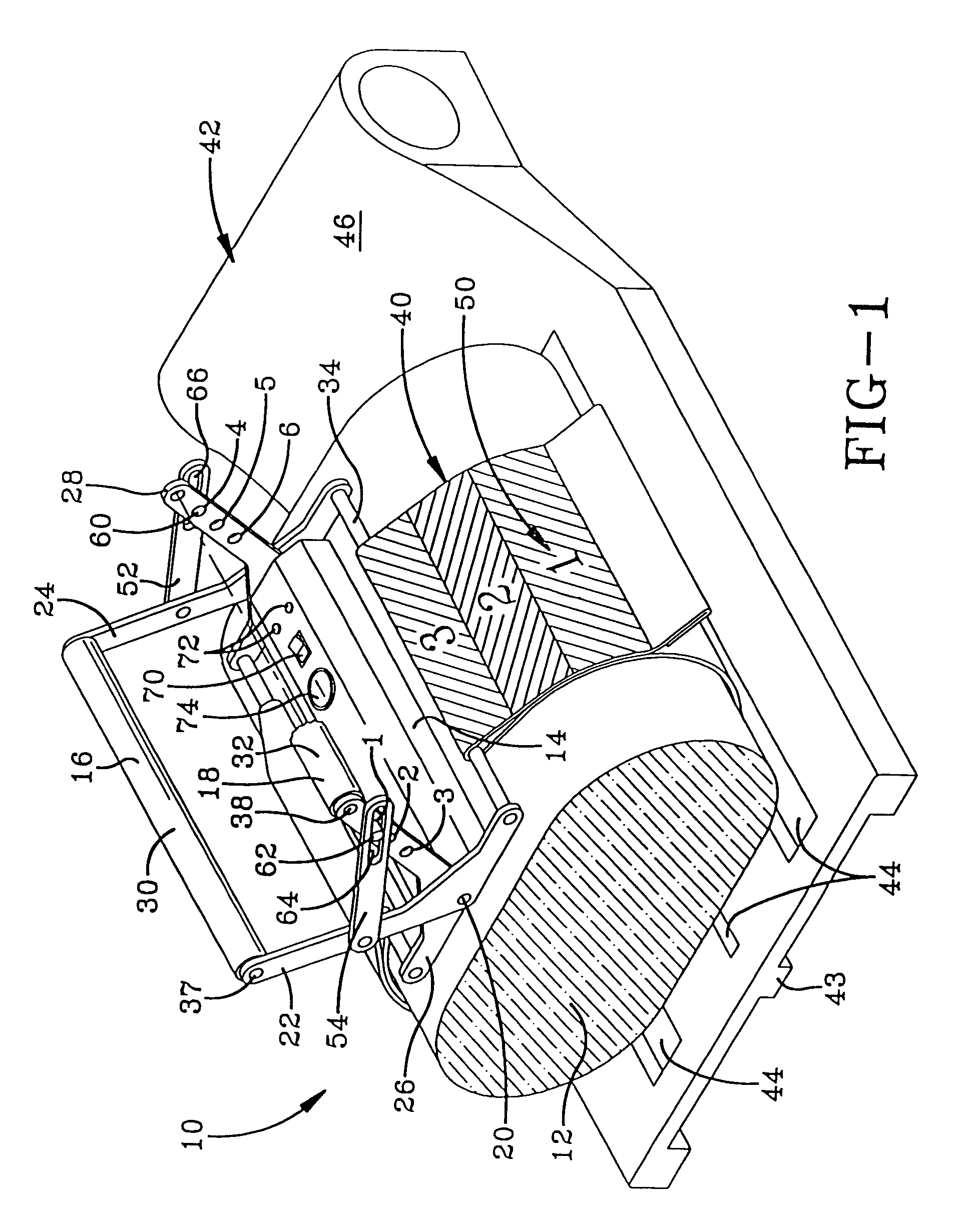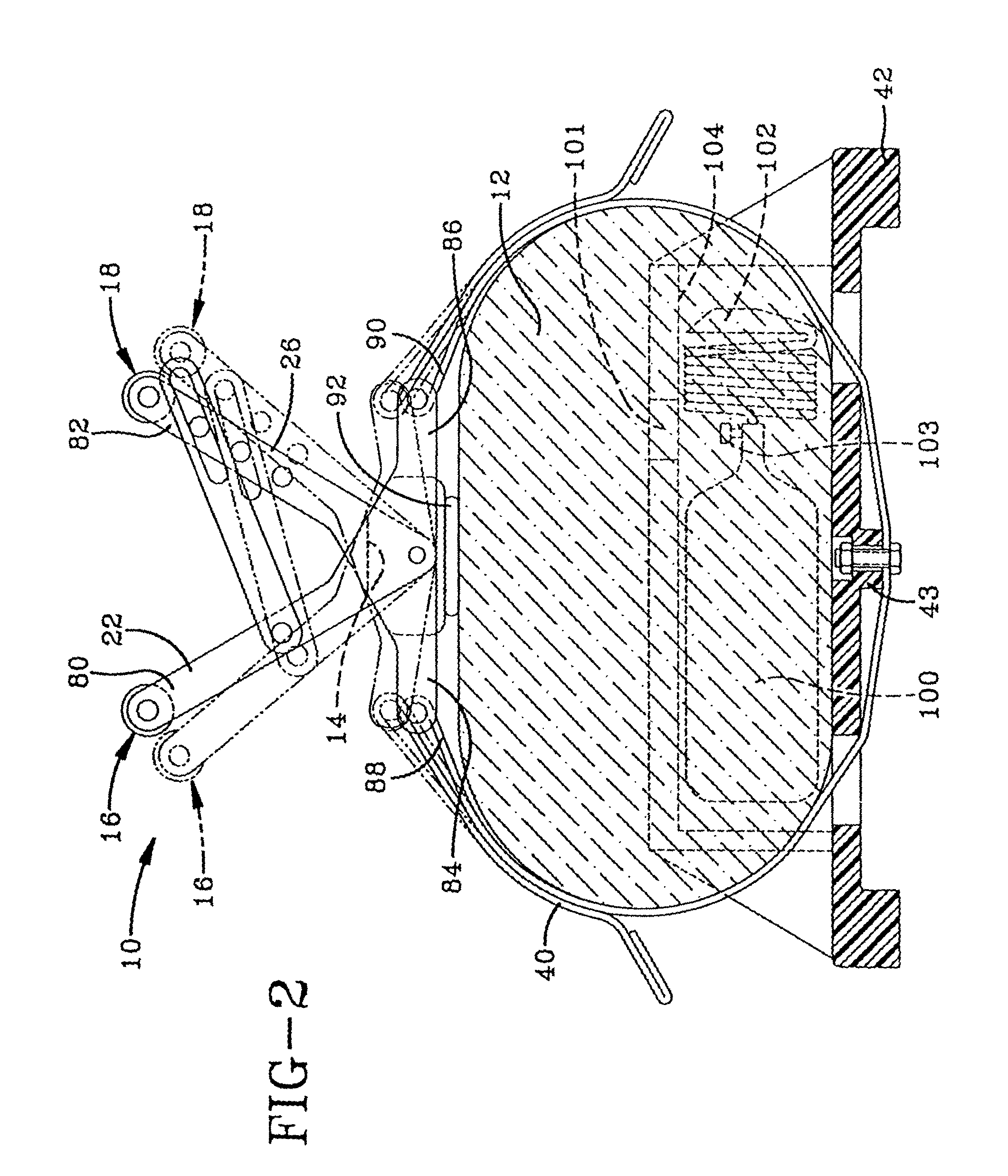Chest compression apparatus for cardiac arrest
a compression apparatus and cardiac arrest technology, applied in the field of medical devices, can solve the problems of limited success of devices, and large and heavy devices, and achieve the effect of enhancing blood flow
- Summary
- Abstract
- Description
- Claims
- Application Information
AI Technical Summary
Benefits of technology
Problems solved by technology
Method used
Image
Examples
Embodiment Construction
[0046]FIG. 1 shows the apparatus10, which is an embodiment of the invention, in its operable position on and around a patient's chest 12. The base 14 is a semi-rigid (preferably plastic) plate or block, preferably having a cushioned outer surface contoured to seat against the central region of the patient's chest 12 near the sternum. The sole 92 of the base 14 is seated against the upper surface of the chest 12 and may have an adhesive pad 500 (shown in FIG. 16) or a suction cup 502 (shown in FIG. 17) to adhere to the chest 12 so that pulling on the base 14 will cause the chest 12 to be pulled for decompression.
[0047]The base 14 contains a switch 70 and a pair of lights 72. Additionally, the base 14 contains a battery, a battery charge indicator and a sound generator (not visible in FIG. 1) which sound generator emits an audible, periodic signal. The visible and audible signals indicate the frequency to a rescuer of a compressive force he or she is to apply to the apparatus 10. One ...
PUM
 Login to View More
Login to View More Abstract
Description
Claims
Application Information
 Login to View More
Login to View More - R&D
- Intellectual Property
- Life Sciences
- Materials
- Tech Scout
- Unparalleled Data Quality
- Higher Quality Content
- 60% Fewer Hallucinations
Browse by: Latest US Patents, China's latest patents, Technical Efficacy Thesaurus, Application Domain, Technology Topic, Popular Technical Reports.
© 2025 PatSnap. All rights reserved.Legal|Privacy policy|Modern Slavery Act Transparency Statement|Sitemap|About US| Contact US: help@patsnap.com



